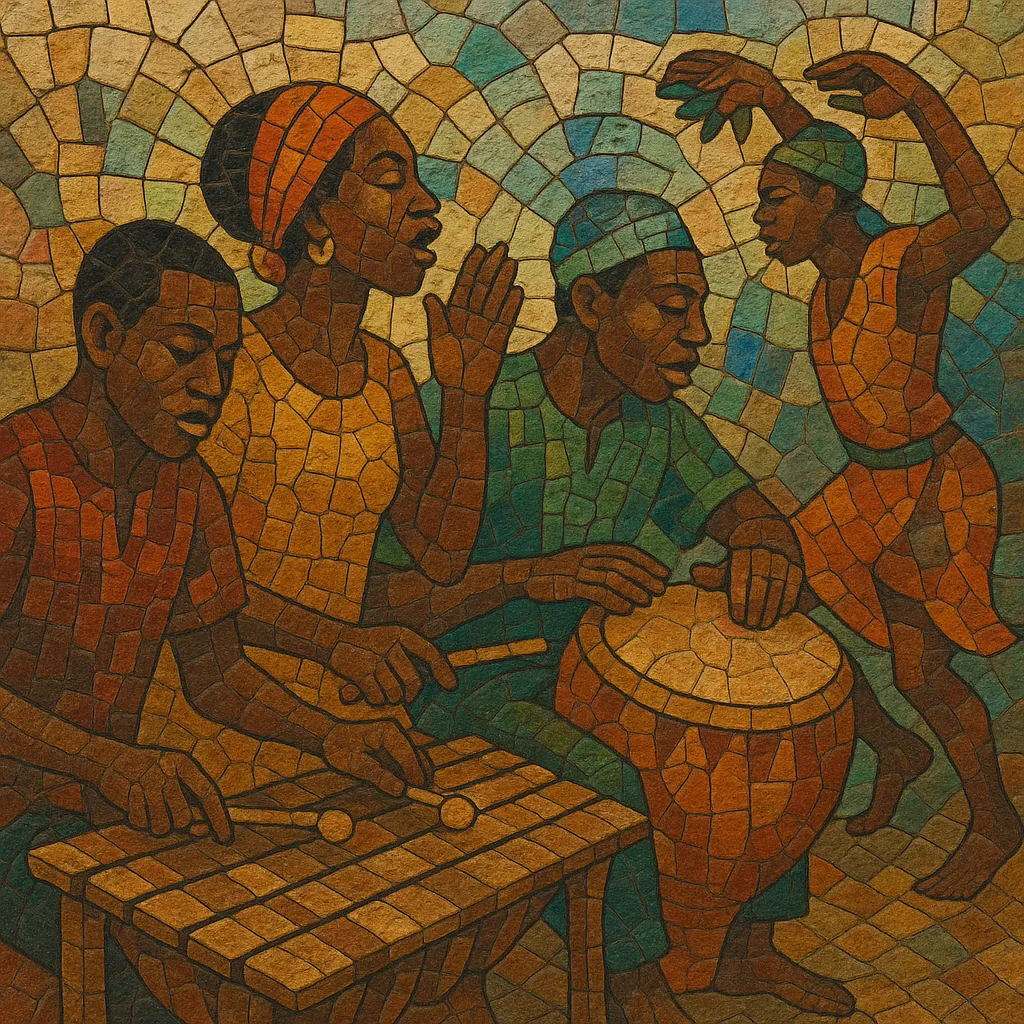
Mossi music refers to the traditional and court-derived musical practices of the Mossi (Mooré-speaking) people of present-day Burkina Faso.
It is characterized by energetic dance rhythms (notably the warba dance), call-and-response singing, and a strong emphasis on percussion led by the bendré (a large calabash/gourd drum) alongside balafon (wooden xylophone), rattles, handclaps, and end-blown flutes. Melodies are often pentatonic and delivered in the Mooré language by praise-singers who recount lineages, extol chiefs (Naaba), and transmit proverbs and social commentary.
While rooted in royal and ceremonial contexts, Mossi music also lives in community celebrations and rites of passage, and it underpins many modern Burkinabé “tradimoderne” styles that blend traditional rhythms with guitars, keyboards, and contemporary production.
The Mossi kingdoms emerged centuries ago in the Voltaic region, and music quickly became central to court ceremony and social cohesion. Royal ensembles used bendré drums, flutes, and balafons to mark appearances of the Naaba (king), announce events, and support praise-poetry that affirmed dynastic legitimacy. These practices, embedded in the Mooré language and oral history, formed the core repertoire of Mossi ceremonial music.
Beyond the court, Mossi music thrived in communal contexts—naming ceremonies, harvest celebrations, and marriages. The lively warba dance rhythm, driven by interlocking drum patterns, became emblematic. Call-and-response vocals enabled collective participation, while praise-singing served as a social archive, preserving genealogies and norms.
In the 20th century, colonial administration and urbanization (in Ouagadougou and beyond) brought new instruments and media. Balafons and bendré drums began sharing space with guitars and accordions, and traditional forms were adapted for radio and stage. Praise-singers and traditional troupes engaged broader audiences while maintaining ceremonial roles.
Since the late 20th century, Burkinabé artists have fused Mossi rhythms (especially warba) with pop, Afrobeat/afrobeats, and electronic production. This “tradimoderne” approach sustains core features—percussion-forward grooves, Mooré lyrics, and call-and-response—while appealing to dancefloors and festivals. Today, Mossi music remains a living tradition, simultaneously ceremonial, communal, and modern.

